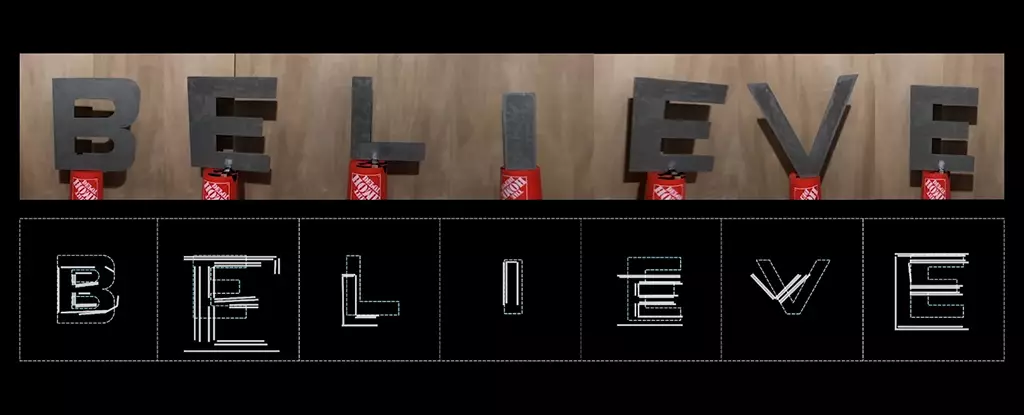Wi-Fi signals have long been synonymous with internet connectivity and streaming media. However, recent experiments have revealed that Wi-Fi signals can do much more than just provide wireless communication. Researchers at the University of California Santa Barbara (UCSB) have devised a groundbreaking method to use Wi-Fi signals to identify shapes through solid walls. This technological development has the potential to revolutionize various fields such as disaster rescue and smart home monitoring.
While Wi-Fi has been previously proven to detect movement through walls, it has struggled with identifying stationary objects. To tackle this issue, the UCSB researchers designed a Wi-Fi setup that focuses on the edges of objects, similar to how a person would outline a drawing. By utilizing the Geometrical Theory of Diffraction (GTD), which explains wave behavior when they encounter the edges of objects, the researchers were able to interpret the Wi-Fi signals’ composition and direction.
As Wi-Fi signals diffract around the edges of objects, they form distinctive shapes known as Keller cones. These cones act as signatures that can be analyzed to infer the orientation of the object’s edges, creating an edge map of the scene. This innovative approach opens up new possibilities for visualizing objects and scenes that are hidden from direct view.
The UCSB team, led by electrical and computer engineer Yasamin Mostofi, developed a system called Wiffract to implement their novel approach. Wiffract consists of three Wi-Fi transmitters that emit signals and a mobile receiver that captures the signals as they bounce off objects. The receiver collects data from these signals, allowing for the interpretation of Keller cones and subsequently revealing the hidden scene.
Analyzing the shapes corresponding to Keller cones requires complex mathematical calculations and informed estimations. By focusing on edges that deliver strong readings, the scientists can enhance the system’s capability to detect edges with weaker signals, possibly located further away from the transmitters or concealed within a space. Through Bayesian information propagation, the information from high-confidence edge points is propagated to other points, aiding in the reconstruction of the entire scene.
Although further refinement is necessary, this Wi-Fi technology already demonstrates the ability to recognize large letters. The potential applications for this groundbreaking innovation are vast. In disaster rescue scenarios, where visibility may be limited, Wi-Fi signals could provide vital information about the structure of collapsed buildings or hidden survivors. Additionally, in the realm of smart home monitoring, this technology could enable “seeing” inside rooms that are obstructed from view.
The breakthrough achieved by the UCSB researchers is truly remarkable. By harnessing the power of Wi-Fi signals, they have developed a method to identify shapes through solid walls. This technology has the potential to transform various industries, bringing new possibilities for remote sensing and visualization. As further advancements are made, we can anticipate a future where Wi-Fi signals not only provide internet connectivity but also offer insights into hidden worlds.


Leave a Reply